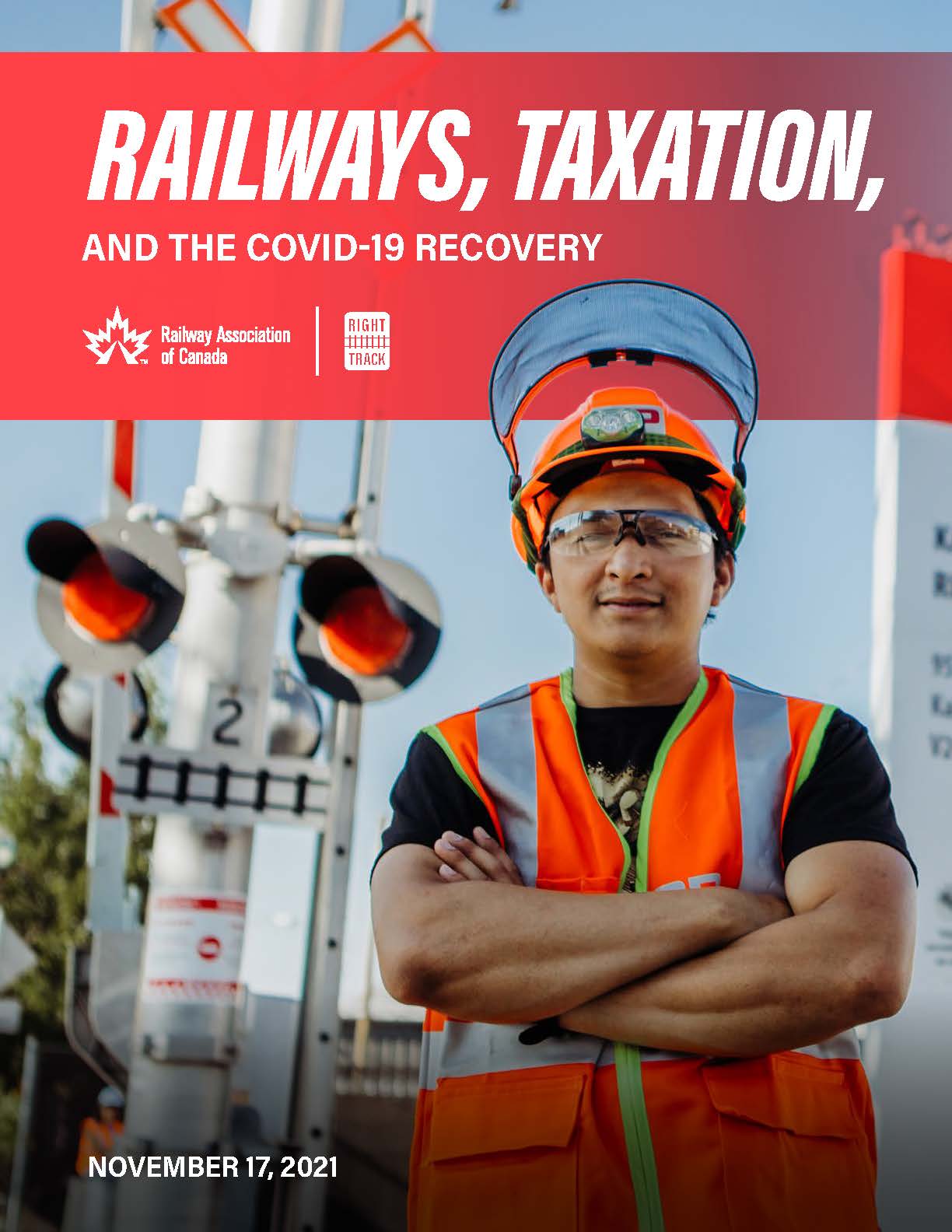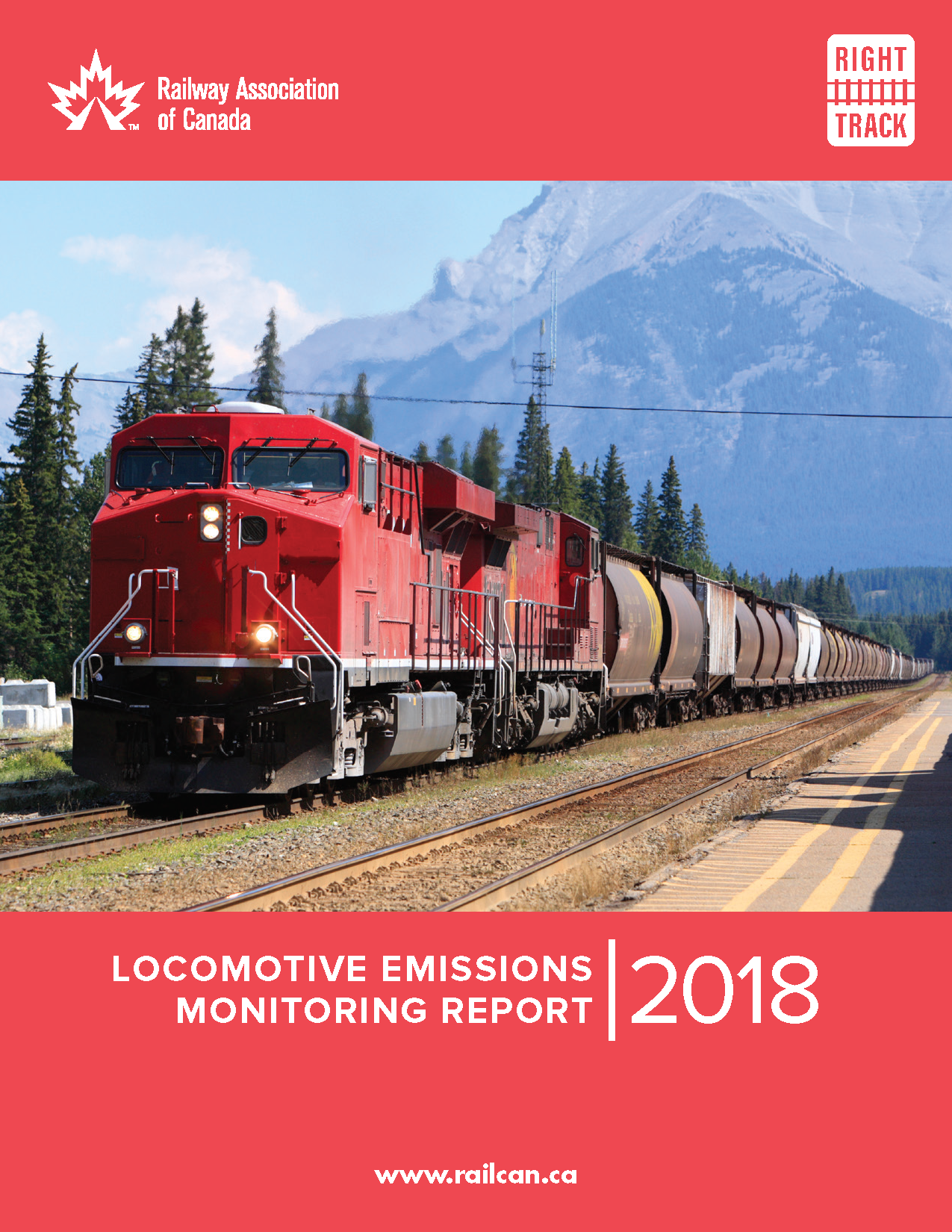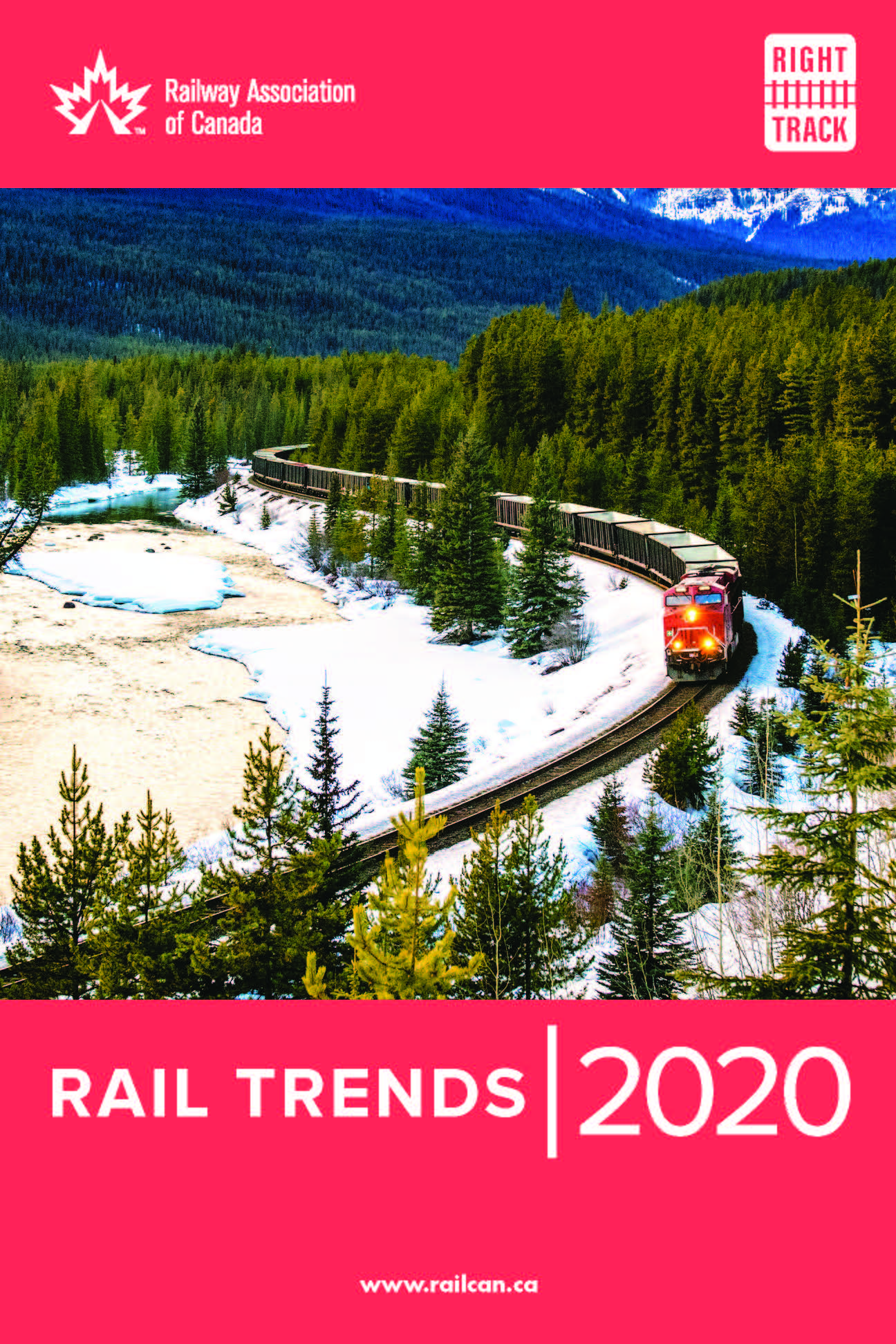Our Publications
The Railway Association of Canada (RAC) produces a range of publications to keep you up to date on what’s happening in Canada’s rail industry. From our quarterly magazine Interchange to our annual statistical document Rail Trends, RAC’s publications give you insight into the industry’s performance and the current issues it faces.
Infosheets, Factsheets and Studies
Did you know that Canada’s intercity passenger rail service connects more than 400 communities from coast to coast? Or that Canada’s railways move a tonne of freight a kilometre for just three cents? Browse through RAC’s fact sheets and infographics to learn more amazing facts about Canada’s rail industry.
Infosheets
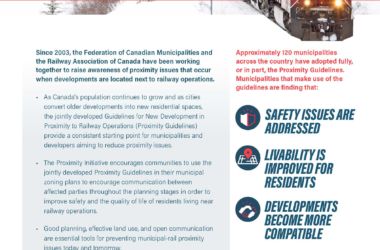
FCM - RAC Proximity Initiative
Since 2003, the Federation of Canadian Municipalities and the Railway Association of Canada have been working together to raise awareness of proximity issues that occur when developments are located next to railway operations.October 2021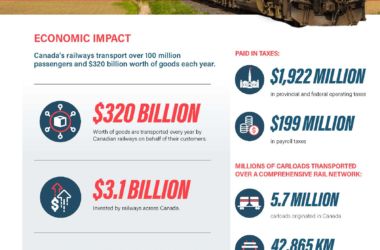
Canada's Railway Profile
Take a look at the impact Canadian railways have on the country. This includes economic and environmental numbers.March 2021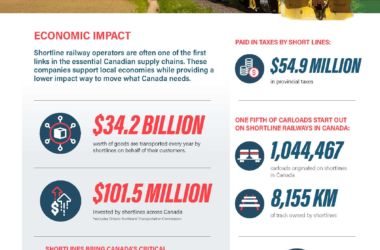
Shortline Railway Profile
Shortline railway operators are often one of the first links in the essential Canadian supply chains. These companies support local economies while providing a lower impact way to move what Canada needs.March 2021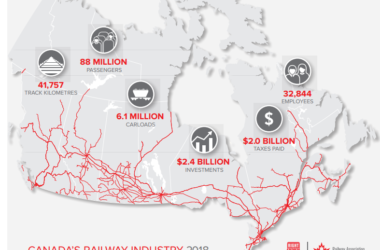
2018 Provincial / Regional Profiles
This two-sided document includes a map of Canada’s railway network and key figures related to the rail industry’s performance in 2018. Page two features a table showing provincial and regional rail industry performance data.
Factsheets

How legalized marijuana could impact workplace safety
Safety is a top priority for Canada’s railways. Before recreational marijuana becomes legal, governments should be on board with policies to ensure workplaces remain safe.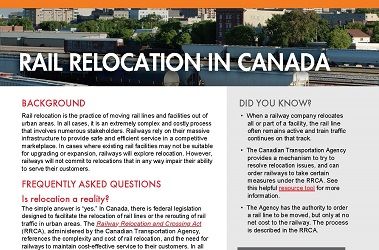
Rail relocation in Canada
Rail relocation is the practice of moving rail lines and facilities out of urban areas. In all cases, it is an extremely complex and costly process that involves numerous stakeholders. Railways rely on their massive infrastructure to provide safe and efficient service in a competitive marketplace. In cases where existing rail facilities may not be suitable for upgrading or expansion, railways will explore relocation. However, railways will not commit to relocations that in any way impair their ability to serve their customers.
Studies

Rail Pathways Initiative Phase 1: Landscape Document
The RAC and its members are collaborating with Transport Canada, Environment and Climate Change Canada, Natural Resources Canada, the Delphi Group, and Pollution Probe to identify opportunities for further decarbonization in Canada’s rail sector. This Phase 1 report of the Rail Pathways Initiative establishes a common understanding of existing policies, programs, and initiatives from governments and industry that impact rail emissions. This report will contribute to the next phase of the initiative which is to develop and implement a roadmap for decarbonization in parallel to federal milestones of 2030 and 2050. This report does not speak to the path forward but provides an inventory of emissions reductions initiatives that exist today.August 2020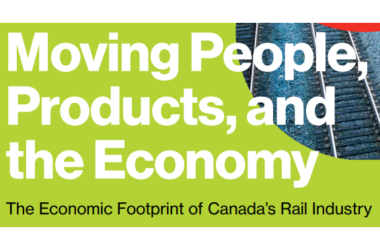
Moving People, Products, and the Economy - The Economic Footprint of Canada's Rail Industry
This report by the Conference Board of Canada, an independent, evidence-based & non-profit research organization, assesses the rail industry’s contribution to the Canadian economy using a “footprint” analysis. This measures the direct, indirect, and induced impacts of the rail industry’s business operations and investments. This analysis does not assess the impact of scenarios in which railways are temporarily shut down—events that have their own, and significant, impacts on the Canadian economy by restricting the flow of goods across the country.April 2020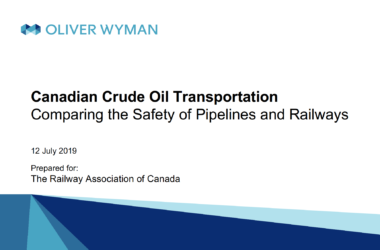
Canadian Crude Oil Transportation Comparing the Safety of Pipelines and Railways
This report by global management consultancy Oliver Wyman found that pipelines and Canada’s Class I Railways have equivalent safety records in the movement of crude oil. From 2014-18, Canadian pipelines and railways combined to move 216,987 billion gallon-miles of crude oil, 99.999% of which was transported without spillage. The report concludes that both takeaway modes - pipelines and rail - are required for Canada’s energy industry to thrive.
